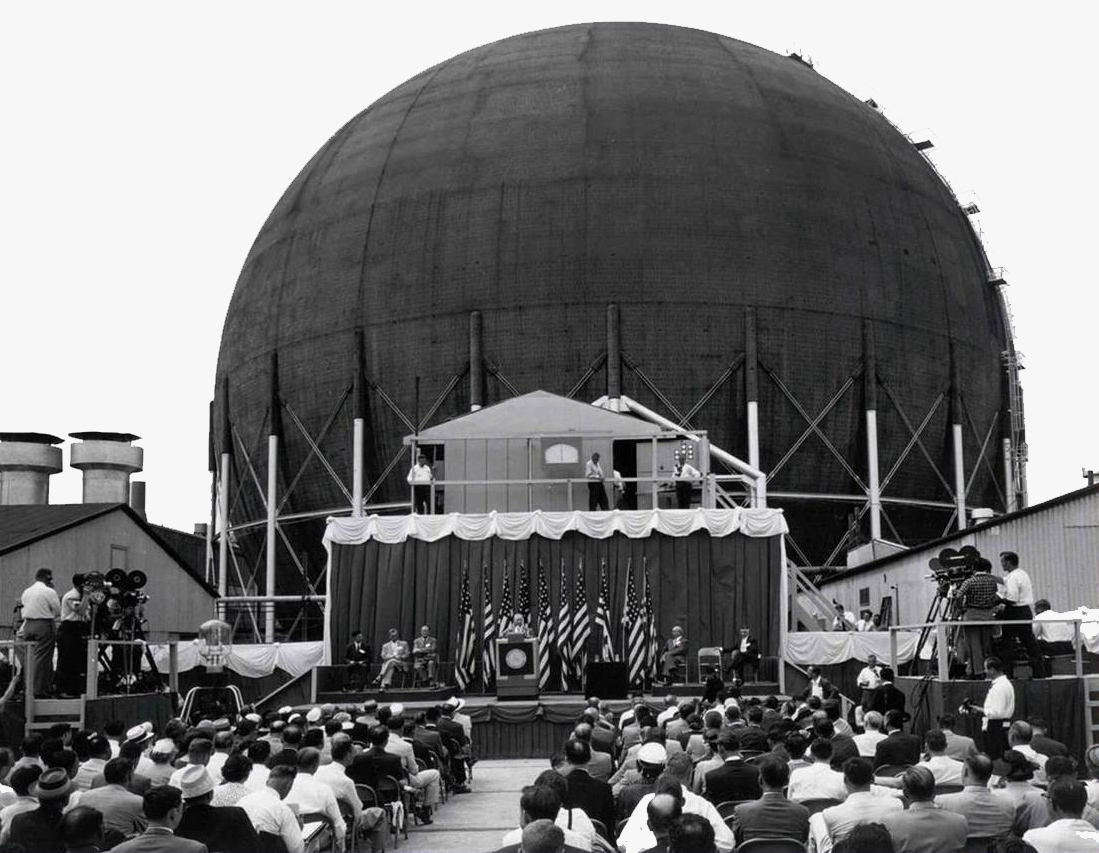
“From New York to the Nuclear Navy,” a new exhibit showing history of nuclear Navy in New York, opened June 29 at the state Military Museum in Saratoga Springs
The key roles New York played in the birth of the nuclear submarine and the nuclear navy are the subject of a temporary exhibit at the New York State Military Museum in Saratoga Springs.
“From New York to the Nuclear Navy” highlights the roles that General Electric, the Knolls Atomic Power Laboratory in Niskayuna, and the Kenneth A. Kesselring Site in West Milton, near Saratoga Springs, played-and continues to play-in the Navy’s nuclear submarine program.
The exhibit will include over sixty artifacts highlighting the history of the Program and celebrating the contributions of all the Naval Nuclear Laboratory sites.
The artifacts include a model of a submarine’s nuclear propulsion system, the ‘keel plate’ from the Hortonsphere, a giant dome constructed to house a nuclear submarine reactor that was constructed at the Kesselring site.
The display, which will run into 2025, was developed in collaboration with the Naval Nuclear Laboratory, Naval Reactors, and the USS Nautilus Museum in Groton, Connecticut.
New York’s role in the Navy’s nuclear power program began in 1946 when General Electric in Schenectady signed a contract with the Navy to design and develop prototype nuclear propulsion systems.
Today the Knolls Atomic Power Laboratory continues to play a vital role in the nuclear submarine program. The propulsion systems used on the Virginia class fast attack submarines and the Columbia Class ballistic missile submarine were designed there.
The Kesselring site, originally designed to test reactors, now serves as a training facility for Sailors operating nuclear power plants on aircraft carriers and submarines. Since 1955, more than 50,000 people have been trained at the site.
Founded in 1948 by Admiral Hyman G. Rickover, the Naval Nuclear Propulsion Program has total responsibility for all aspects of the Navy’s nuclear propulsion, including research, design, construction, testing, operation, maintenance and ultimate disposition of naval nuclear propulsion plants.
The Program’s responsibility includes all related facilities, radiological controls, environmental safety, and health matters, as well as selection, training, and assignment of personnel.
The museum, maintained by the state Division of Military and Naval Affairs, is open Tuesdays to Saturdays from 10 a.m. to 4 p.m. and admission is free.
For more information on the state Military Museum, visit museum.dmna.ny.gov
For more information on the Naval Nuclear Propulsion Program, visit energy.gov/nnsa/powering-navy. For information on the Naval Nuclear Laboratory, visit navalnuclearlab.energy.gov.
